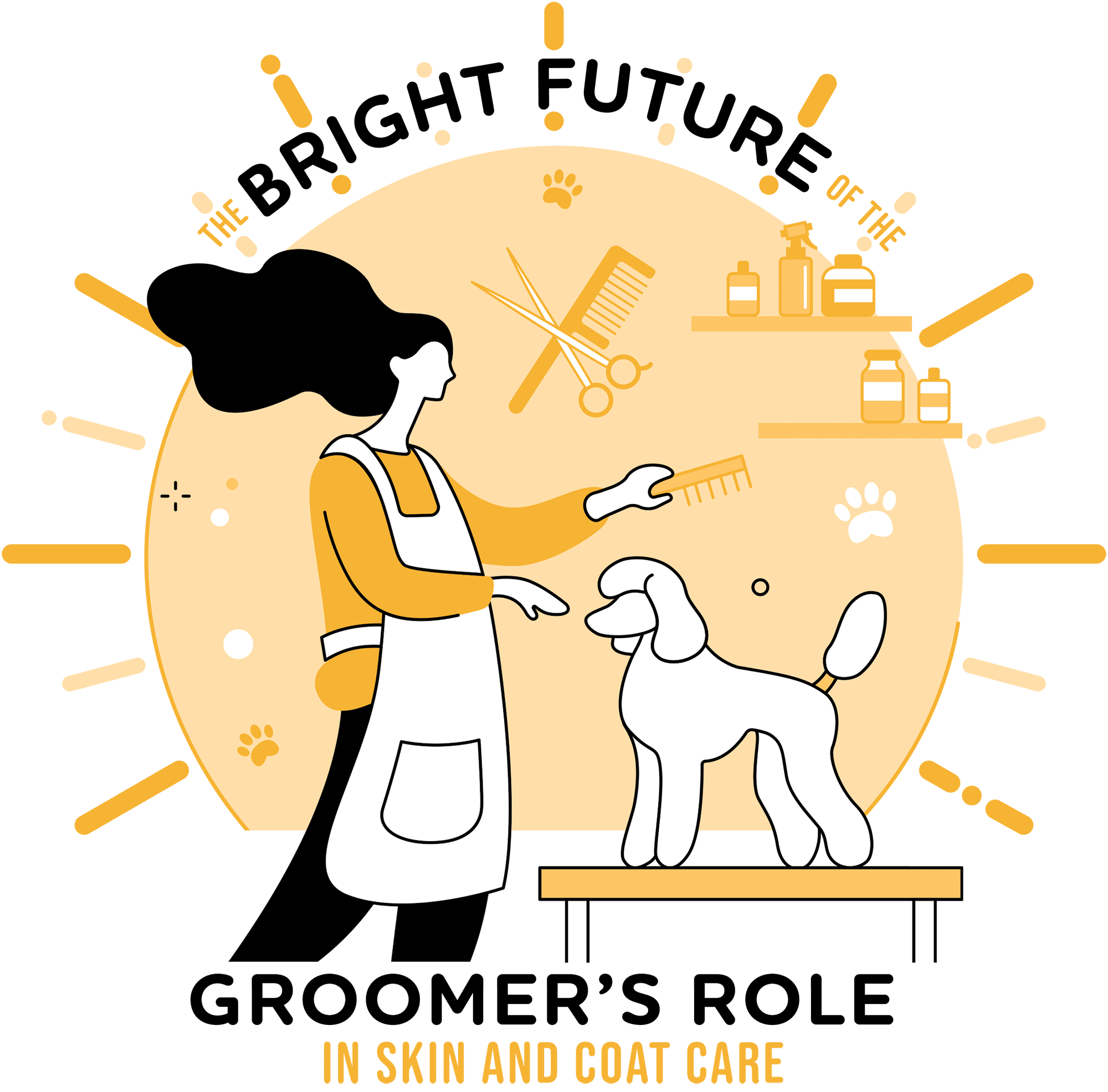
by Jennifer Bishop Jenkins
 he start of the new year is always a good time to take stock of where we have been and where we are going. One of the most exciting trends in grooming as we dive into 2024 is the significant increase in groomers who are educated in, and dedicated to, caring for the skin and coat of the pets we serve. And since this is what our clients are paying us to do, they expect that we know something about the skin and coat that we are working on, and that we have had some training in its proper care. Sadly, we all know that the lack of regulation in our industry often means that no such training has been done.
he start of the new year is always a good time to take stock of where we have been and where we are going. One of the most exciting trends in grooming as we dive into 2024 is the significant increase in groomers who are educated in, and dedicated to, caring for the skin and coat of the pets we serve. And since this is what our clients are paying us to do, they expect that we know something about the skin and coat that we are working on, and that we have had some training in its proper care. Sadly, we all know that the lack of regulation in our industry often means that no such training has been done.THE GAME-CHANGING PANDEMIC
We have seen in recent years a rapid increase in pet ownership because of the global COVID pandemic that started in 2020, and our industry has felt the sharp increase in demand for our grooming skills. Further, ten years from now, we will all see a significant uptick in the percentage of our clients that are geriatric, and therefore harder to groom. But it isn’t only groomers who are under higher demand since the pandemic—veterinarians are also stressed like never before.
Everywhere I have investigated, veterinarians’ prices have risen dramatically and their availability has markedly dropped. This supply-and-demand problem for groomers and veterinarians can be seen as a positive trend for us as an industry, however. With groomers increasing our educational understanding in skin and coat care, our role can be more pivotal.


THE LARGEST AND MOST IMPORTANT ORGAN IN THE BODY
Together, the skin and coat in all mammals form what science calls the “Integumentary System.” The National Center for Biotechnology Information website defines this as “. . . the largest organ of the body that forms a physical barrier between the external environment and the internal environment that it serves to protect and maintain. The integumentary system includes the epidermis, dermis, hypodermis, associated glands, hair, and nails.”1 As pet groomers, this is the system of the mammals’ bodies that we work on all day, so we should be, and are, skin and coat technicians.
The fact that the grooming industry is now being seen more and more as a partner with the pet’s veterinarian to prevent or deal with skin and coat issues is clearly one of the most exciting trends and opportunities available to groomers for 2024 and beyond. Once groomers equip themselves with some of the many progressive educational opportunities in skin and coat expertise now available, they can then develop a better relationship with area veterinary practices in mutually beneficial ways.
GROOMERS AS TECHNICIANS
The grooming educator who first enthralled me with the science of canine skin and coat was Michelle Knowles, ICMG. When asked what motivated her to become one of the leading skin and coat experts in our industry, she shared this: “Getting a proper diagnosis, for me, will always be the goal before any therapeutics are performed. One of the most frustrating conditions that veterinarians see is ‘allergies’ or ‘itchy skin.’ While veterinarians have excellent diagnostics, pet stylists and aestheticians have the knowledge it takes to support the skin topically.
“In today’s world, it can take weeks to be seen by your veterinary partner, even if they know you and your dog,” Michelle continues. “I fully support and promote improving pet groomer/veterinarian relationships to alleviate the burden of compliance cases. Education is always the best way to pave the way for future understanding. There is so much these pet care branches can share. Strengthening the bond between vets and pet groomer/estheticians can vastly improve compliance, and weekly or monthly check-ins with the esthetician will keep everyone in the loop during the length of the treatment period.”
VETERINARY SCIENCE SUPPORTS GROOMERS
To see a major medical manual writing into its procedural instructions that it is “best done by professional groomers” is a powerful landmark in pet grooming history. It truly is an exciting time to be a groomer with an expertise in skin and coat.
References:
- Y, Joyce. Dao, H. (2023, May). Physiology, Integument. National Library of Medicine. https://www.ncbi.nlm.nih.gov/books/NBK554386/
- Moriello, K. (2020, Jan). Principles of Topical Therapy in Animals. Merck Veterinary Manual. https://www.merckvetmanual.com/integumentary-system/congenital-and-inherited-anomalies-of-the-integumentary-system/congenital-and-inherited-anomalies-of-the-integumentary-system-in-animals


